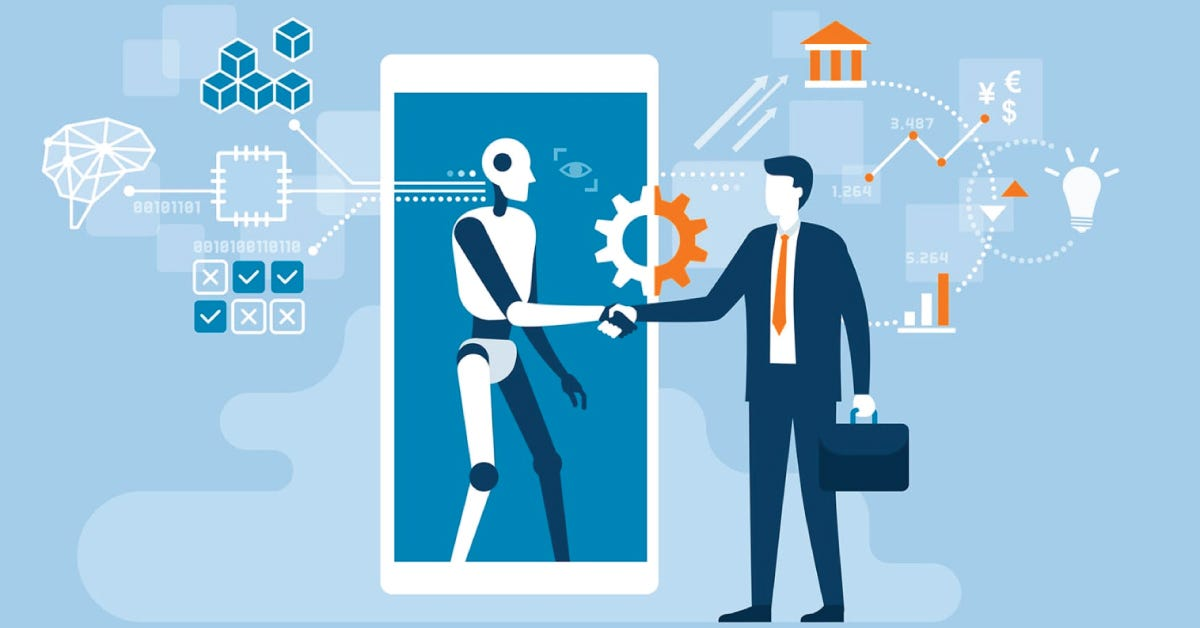Discover how Google Cloud is redefining AI-powered customer experience through automation, personalization, and predictive engagement. Learn how Dialogflow, Vertex AI Search, and Contact Center AI help brands achieve 40% faster service, 30% higher CSAT, and scalable, intelligent CX in 2025.

AI-Powered Customer Experience is transforming how brands connect, serve, and retain their customers in the digital-first era. As enterprises compete on personalization and responsiveness, Google Cloud emerges as a leader in enabling data-driven, intelligent, and emotionally aware engagement across every customer touchpoint.
-
Introduction: The Experience Economy Meets Artificial Intelligence
-
Why AI-Powered Customer Experience Matters
-
Google Cloud’s AI Ecosystem for CX
A. Dialogflow — Conversational AI for Intelligent Engagement
B. Vertex AI Search — Powering Personalization and Recommendations
C. Contact Center AI — Augmenting Human Agents with Machine Intelligence -
Data as the Core of Intelligent CX
-
Measuring Success: Metrics That Matter
-
Best Practices for AI-Driven CX Optimization
-
Real-World Case Study: AI-Enhanced CX in Action
-
Conclusion
-
Summary
Introduction: The Experience Economy Meets Artificial Intelligence
In today’s hyper-connected marketplace, customer experience has become the ultimate differentiator. Price and product still matter, but what keeps customers coming back is how a brand makes them feel — the ease, relevance, and intelligence of every interaction.
As businesses race to meet rising expectations for real-time, personalized, and frictionless engagement, artificial intelligence (AI) has emerged as the strategic backbone of modern CX. And at the heart of this revolution stands Google Cloud Platform (GCP) — a comprehensive suite of AI, data, and automation tools built to help enterprises design intelligent, scalable, and deeply human experiences.
From AI-driven chatbots that resolve issues in seconds to recommendation engines that anticipate needs before they’re expressed, Google Cloud enables brands to transform reactive service into predictive engagement. This article explores how GCP technologies — including Dialogflow, Vertex AI Search, and Contact Center AI — power this evolution and what metrics prove their success.
1. Why AI-Powered Customer Experience Matters
The modern customer journey spans multiple touchpoints — web, mobile, email, social, and voice. Managing this complexity manually is nearly impossible. AI automates the understanding, prediction, and optimization of these interactions, making personalization scalable.
Key benefits of AI in CX:
- Speed and responsiveness: AI reduces customer wait times by automating first-level interactions.
- Personalization at scale: Machine learning analyzes behavioral and transactional data to tailor offers and messages.
- Predictive engagement: AI anticipates customer intent — enabling brands to act before a request even arises.
- Consistency across channels: Intelligent automation ensures coherent brand voice and service quality.
- Reduced costs: AI-driven service automation cuts operational costs while improving satisfaction.
According to Google Cloud reports, companies that integrate AI-powered CX tools see up to 30% faster query resolution, 25% higher customer satisfaction (CSAT), and 40% improvement in conversion efficiency.
2. Google Cloud’s AI Ecosystem for Customer Experience
GCP offers an integrated ecosystem where data, AI, and analytics converge to deliver seamless, context-aware interactions. Three cornerstone solutions drive this transformation:
A. Dialogflow — Conversational AI for Intelligent Engagement
Dialogflow, Google’s natural language understanding (NLU) platform, powers the next generation of chatbots and virtual assistants. Built on Google’s AI and speech technologies, it enables developers to create conversational agents that understand intent, context, and emotion.
Capabilities:
- Multichannel integration: Deploy bots on web, mobile, social platforms, and voice assistants.
- Context retention: Maintains memory across interactions to deliver personalized continuity.
- Multilingual support: Understands over 30 languages for global scalability.
- Rich fulfillment: Integrates backend APIs for transactions, payments, or data retrieval.
Real-world impact:
A major airline using Dialogflow CX reduced call center volume by 45%, while maintaining a 92% first-contact resolution rate. Retailers and banks leverage it to automate FAQs, order tracking, loan applications, and appointment scheduling — freeing agents to focus on high-value interactions.
B. Vertex AI Search — Powering Personalization and Recommendations
The future of CX is predictive. Customers expect content, offers, and products to find them rather than the other way around. Vertex AI Search (formerly Enterprise Search) enables brands to deliver personalized discovery experiences powered by deep learning and contextual understanding.
Core features:
- Semantic search and recommendation: AI understands intent, not just keywords, returning the most relevant results.
- Personalized recommendations: Analyzes purchase history, browsing patterns, and preferences.
- Integration with e-commerce and CRM systems: Real-time adaptability for cross-selling and up-selling.
- Multimodal AI: Combines text, voice, and image inputs for intuitive search experiences.
Impact metrics:
- Retailers using Vertex AI Recommendation models have seen 15–30% increases in average order value (AOV).
- Media platforms report 20%+ higher engagement rates through intelligent content curation.
- B2B enterprises note faster lead conversion through personalized content delivery.
By embedding AI into discovery, brands shift from reactive browsing to predictive guidance — creating a frictionless experience that feels uniquely tailored to every user.
C. Contact Center AI — Augmenting Human Agents with Machine Intelligence

Contact centers remain the heartbeat of customer service, but traditional setups often suffer from inefficiency and information gaps. Google Cloud Contact Center AI (CCAI) bridges this divide by combining automation and human empathy.
Key components:
- Virtual Agent (powered by Dialogflow CX): Handles routine queries with conversational precision.
- Agent Assist: Provides real-time suggestions and next-best actions during live interactions.
- Sentiment analysis: Detects customer emotion and urgency through tone and language cues.
- Insights dashboards: Leverage analytics to identify common pain points and optimize performance.
Proven outcomes:
- 60% reduction in average handle time (AHT) for common service queries.
- Up to 35% improvement in Net Promoter Score (NPS) by enhancing first-contact resolutions.
- Enhanced agent productivity through contextual prompts and AI-powered knowledge retrieval.
In essence, Contact Center AI transforms reactive support into proactive engagement — where every conversation becomes a data point for continuous improvement.
3. Data as the Core of Intelligent CX
No AI strategy succeeds without clean, connected, and contextual data. Google Cloud’s infrastructure ensures that organizations can collect, unify, and analyze vast data sets securely and efficiently.
GCP’s Data Backbone for CX:
- BigQuery: Real-time analytics engine that processes petabytes of behavioral, sales, and interaction data for actionable insights.
- Pub/Sub and Dataflow: Manage streaming data pipelines from multiple channels to fuel real-time decision engines.
- Looker and Vertex AI integration: Enables visual storytelling and predictive dashboards for business users.
- Data privacy and governance: GCP’s security framework ensures compliance with GDPR, CCPA, and industry standards.
With these tools, marketers and CX strategists can build dynamic customer profiles, analyze churn risk, and deploy predictive models that personalize every journey.
4. Measuring Success: Metrics That Matter
AI initiatives must translate into measurable business outcomes. The following KPIs reflect how GCP-powered CX optimization delivers quantifiable value:
| Metric | Pre-AI Baseline | Post-AI on GCP | Business Impact |
| Customer Satisfaction (CSAT) | 70–75% | 85–92% | Higher retention & advocacy |
| Average Handle Time (AHT) | 8 min | 3 min | 60% faster resolution |
| Conversion Rate | 2.5% | 4.2% | +68% sales growth |
| Customer Retention | 65% | 80% | Lower churn |
| Cost per Interaction | $6.50 | $3.80 | Reduced support costs |
These figures (from Google Cloud and independent enterprise case studies) highlight how data-driven automation doesn’t just improve experiences — it amplifies profitability.
5. Best Practices for AI-Driven CX Optimization
To extract maximum value from Google Cloud’s AI capabilities, enterprises must align strategy, technology, and culture.
1. Start with Customer Journey Mapping
Identify key moments of truth where AI can enhance experience — from onboarding to renewal. Prioritize high-impact touchpoints for automation.
2. Integrate AI with Human Empathy
Automation shouldn’t eliminate the human touch. Use AI to assist, not replace, agents — ensuring empathy remains central to brand interactions.
3. Leverage Unified Data Architecture
Adopt centralized data lakes using BigQuery and Looker for consistent, cross-functional insights. Avoid siloed analytics.
4. Continuously Train and Tune Models
Customer behavior evolves — so should your AI models. Use Vertex AI pipelines to retrain models regularly based on new data.
5. Measure, Learn, and Iterate
Define success metrics early (CSAT, NPS, conversion, retention). Track them in Looker dashboards to ensure data-driven optimization.
6. Prioritize Security and Trust
AI systems must comply with privacy laws and ethical guidelines. Transparency builds long-term trust in automated interactions.
7. Adopt a Cross-Functional CX Team
Combine marketing, IT, and data science functions to design holistic AI experiences instead of fragmented automations.
6. Real-World Case Study: AI-Enhanced CX in Action

A global retail brand integrated Dialogflow CX and Vertex AI Search within its e-commerce platform. Within three months:
- Customer self-service adoption grew by 48%, reducing email support volume by 40%.
- AI-based recommendations lifted average order value (AOV) by 25%.
- Personalized campaigns drove a 32% improvement in conversion rates.
- Overall NPS rose from 67 to 84.
The success wasn’t just in automation — it was in the intelligence behind it. By combining predictive insights with empathetic design, the retailer transformed interactions into experiences customers remembered.
Conclusion
The intersection of AI and customer experience defines the future of digital business. As personalization, automation, and predictive engagement become core expectations, Google Cloud provides the technical foundation and strategic flexibility to deliver on these demands at scale.
Through solutions like Dialogflow, Vertex AI Search, and Contact Center AI, brands are moving from static customer service to dynamic customer understanding — anticipating needs, personalizing journeys, and optimizing every touchpoint.
AI-powered CX is no longer experimental; it’s the new standard of excellence. Organizations that leverage Google Cloud’s full AI ecosystem will not only improve efficiency but will forge deeper, data-driven, and emotionally intelligent customer relationships.
Summary
In the AI-driven era of 2025, customer experience is the primary battleground for business growth — and Google Cloud Platform (GCP) stands at its forefront. Leveraging tools like Dialogflow for conversational engagement, Vertex AI Search for personalized recommendations, and Contact Center AI for intelligent service orchestration, GCP empowers brands to build predictive, personalized, and efficient customer journeys.
Enterprises that integrate these capabilities report remarkable improvements — faster query resolution, 30–40% higher CSAT, and significant gains in retention and conversions. Underpinning this success is GCP’s robust data infrastructure — BigQuery, Dataflow, and Looker — which unify insights and enable real-time decision-making.
The future of CX is not about automating interactions but humanizing them through intelligence. By combining data, AI, and empathy, organizations can deliver experiences that feel personal, immediate, and intuitive — at global scale. Google Cloud makes that transformation not only possible, but inevitable.


